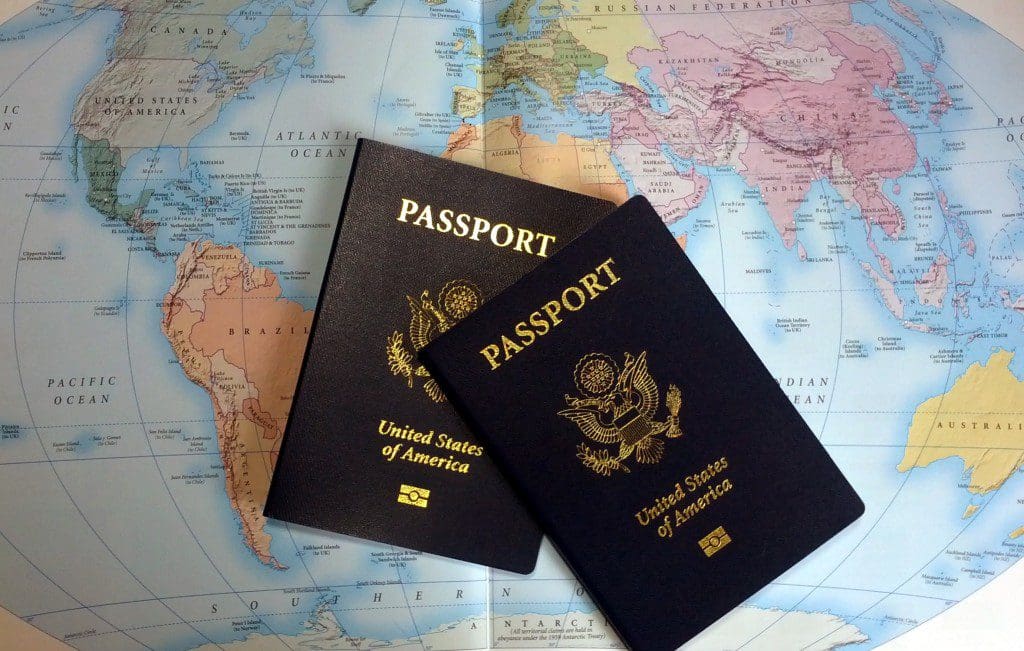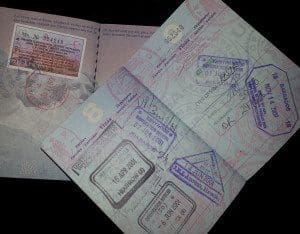 In 2007, new requirements went into effect requiring Americans who travel to Mexico or Canada to have passports. As a result, nearly 30 million new passport applications were submitted over the two year period surrounding the new regulation, and the first passport crisis ensued. Processing backlogs created long wait times, which in turn played havoc with travel plans. Nearly a decade later, as those passports approach expiration, Passport Services at the U.S. State Department is expecting a repeat of the application surge, this time for renewals: passport crisis 2.0.
In 2007, new requirements went into effect requiring Americans who travel to Mexico or Canada to have passports. As a result, nearly 30 million new passport applications were submitted over the two year period surrounding the new regulation, and the first passport crisis ensued. Processing backlogs created long wait times, which in turn played havoc with travel plans. Nearly a decade later, as those passports approach expiration, Passport Services at the U.S. State Department is expecting a repeat of the application surge, this time for renewals: passport crisis 2.0.
How to Avoid a Passport Crisis
The number of Americans who travel outside the U.S. has continued to grow over time. There are now 125 million U.S. citizens holding passports. If you plan to be one of them, we strongly encourage you to take the following actions as soon as possible.
- Check your passport expiration date NOW. Keep in mind that many foreign countries require your passport to be valid six months beyond your intended stay. Even if your passport is currently valid, you can be denied travel if the expiration date is too soon.
- Apply NOW. Under normal conditions, routine passport processing takes approximately 4 – 6 weeks; however, that time frame is likely to lengthen if/when the applications multiply. Allow plenty of time before travel to renew to avoid expedited processing fees.
- Expediting is available. If you do run short on time, Passport Services offers expedited services of approximately three weeks and private third party expediting services can facilitate processing from 8 – 10 days to as little as one day. Generally, the faster the turnaround required, the higher the expedition fees.
 Check your available visa pages. Many countries require a minimum of two blank visa pages upon entry. Previously frequent travelers could have extra visa pages added to their passports; however, effective January 2016, this service will no longer be offered. Travelers who need more visa pages must get a new passport. They will have the option of 28 or 52 pages, with no difference in cost.
Check your available visa pages. Many countries require a minimum of two blank visa pages upon entry. Previously frequent travelers could have extra visa pages added to their passports; however, effective January 2016, this service will no longer be offered. Travelers who need more visa pages must get a new passport. They will have the option of 28 or 52 pages, with no difference in cost.- Don’t misplace your most valuable travel document. If you can’t remember in which drawer you filed your passport, search thoroughly before reporting it missing. Once a passport is officially lost, it can’t be reinstated, even if you find it. You’ll have to go through the process and expense of renewal. That said, if it’s stolen, do report that immediately so it can be flagged.
You May Need a Passport for Domestic Travel
If your driver’s license is issued by New York, Louisiana, Minnesota, New Hampshire, or American Samoa, and you were born after December 1, 1964, you will need a passport to board a domestic flight, effective January 19, 2016. This is because the U.S. Department of Homeland Security has decreed that driver’s licenses from the four states and Samoa do not comply with the minimum standards of the federal Real ID system. If your ID is issued by one of these states, we strongly recommend you refer to the above section.
Update 12/1/15: As with many government regulations, the enforcement plan is fluid. Check here for your state’s current status with respect to Real ID compliance.
Passports are not required for cruises that begin and end in U.S. ports, including Puerto Rico and the U.S. Virgin Islands; however, should there be any incident that requires you to fly home – injury, weather disruption, or even a cruise ship malfunction – a passport will be required. While no one expects a calamity on vacation, we strongly recommend that you travel with a passport just in case, and always consider purchasing travel insurance.
For assistance with passport applications, visas and expediting services, please contact Covington Travel.






Leave a Reply